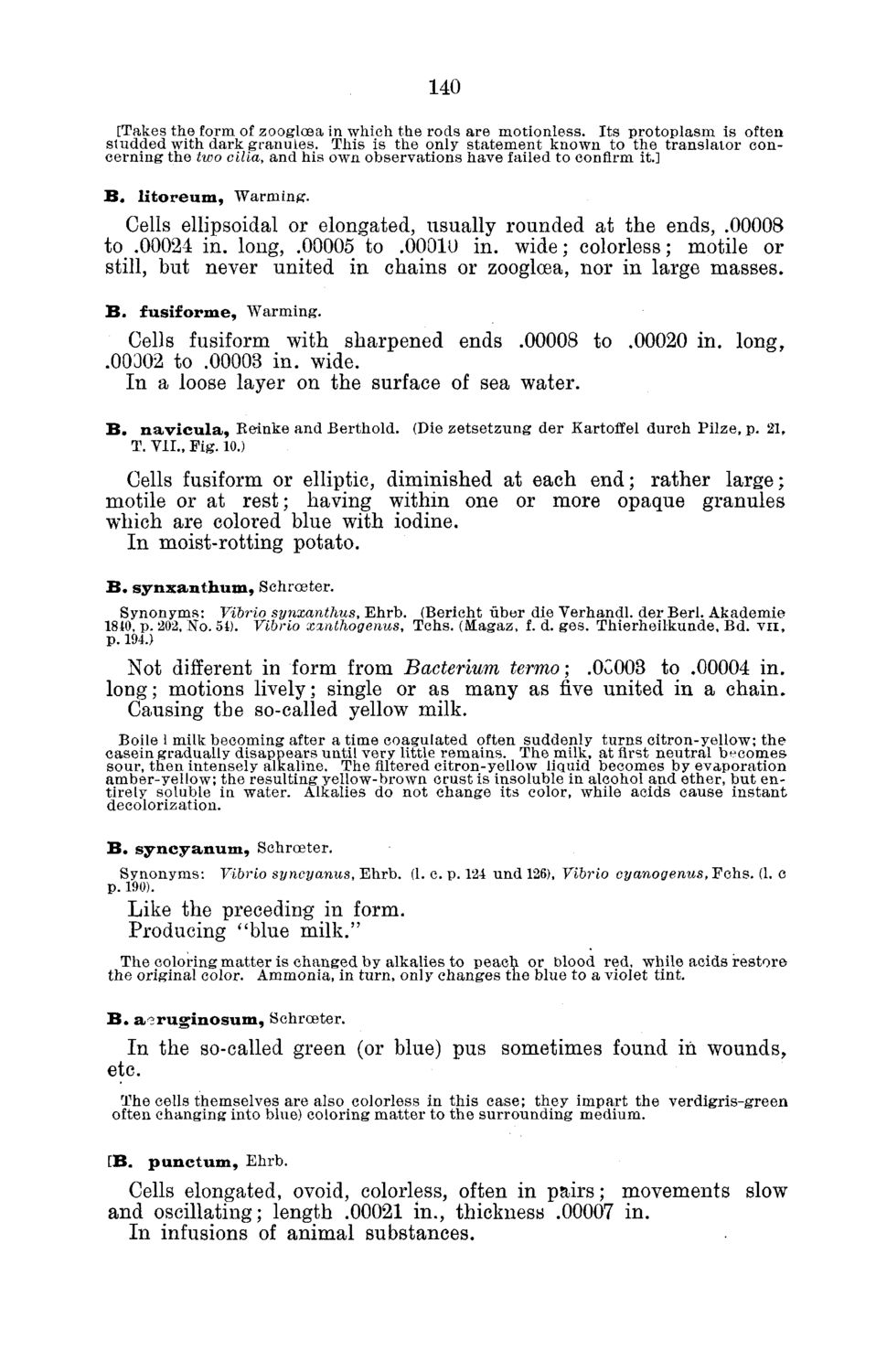Caption: Board of Trustees Minutes - 1882
This is a reduced-resolution page image for fast online browsing.

EXTRACTED TEXT FROM PAGE:
140 [Takes the form of zoogloea in which the rods are motionless. Its protoplasm is often studded with dark granules. This is the only statement known to the translator concerning the two cilia, and his own observations have failed to confirm it.] B . l i t o r e u m , Warming. Cells ellipsoidal or elongated, usually rounded at the ends, .00008 to .00024 in. long, .00005 to .00010 in. wide; colorless; motile or still, but never united in chains or zoogloea, nor in large masses. B . f u s i f o r i n e , Warming. Cells fusiform with sharpened ends .00008 to .00020 in. long, .00302 to .00003 in. wide. In a loose layer on the surface of sea water. B . n a v i c u l a , Keinke and Berthold. (Die zetsetzung der Kartoffel durch Pilze, p. 21, T. VII., Fig. 10.) Cells fusiform or elliptic, diminished at each end; rather large; motile or at rest; having within one or more opaque granules which are colored blue with iodine. In moist-rotting potato. B . s y n x a n t h u m , Schroeter. Synonyms: Vibrio synxanthus, Ehrb. (Bericht iiber die Verhandl. der Berl. Akademie 1840, p. 202, No. 54). Vibrio xxnthogenus, Tchs. (Magaz, f. d. ges. Thierheilkunde, Bd. v n , p. 194.) Not different in form from Bacterium termo; .0G003 to .00004 in. long; motions lively; single or as many as five united in a chain. Causing the so-called yellow milk. Boile 1 milk becoming after a time coagulated often suddenly turns citron-yellow; the casein gradually disappears until very little remains. The milk, at first neutral becomes sour, then intensely alkaline. The filtered citron-yellow liquid becomes by evaporation amber-yellow; the resulting yellow-brown crust is insoluble in alcohol and ether, but entirely soluble in water. Alkalies do not change its color, while acids cause instant decolorization. B . s y n c y a n u m , Schroeter. Synonyms: Vibrio syncyanus, Ehrb. (1. c. p. 124 und 126), Vibrio cyanogenus, Fchs. (1. c p. 190). Like the preceding in form. Producing "blue milk." The coloring matter is changed by alkalies to peach or blood red, while acids restore the original color. Ammonia, in turn, only changes the blue to a violet tint. B . a r u g i n o s u m , Schroeter. In the so-called green (or blue) pus sometimes found in wounds, etc. The cells themselves are also colorless in this case; they impart the verdigris-green often changing into blue) coloring matter to the surrounding medium. [B. p u n c t u m , Ehrb. Cells elongated, ovoid, colorless, often in pairs; movements slow and oscillating; length .00021 in., thickness .00007 in. In infusions of animal substances.
|